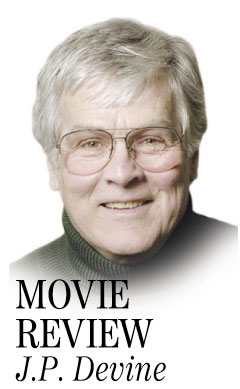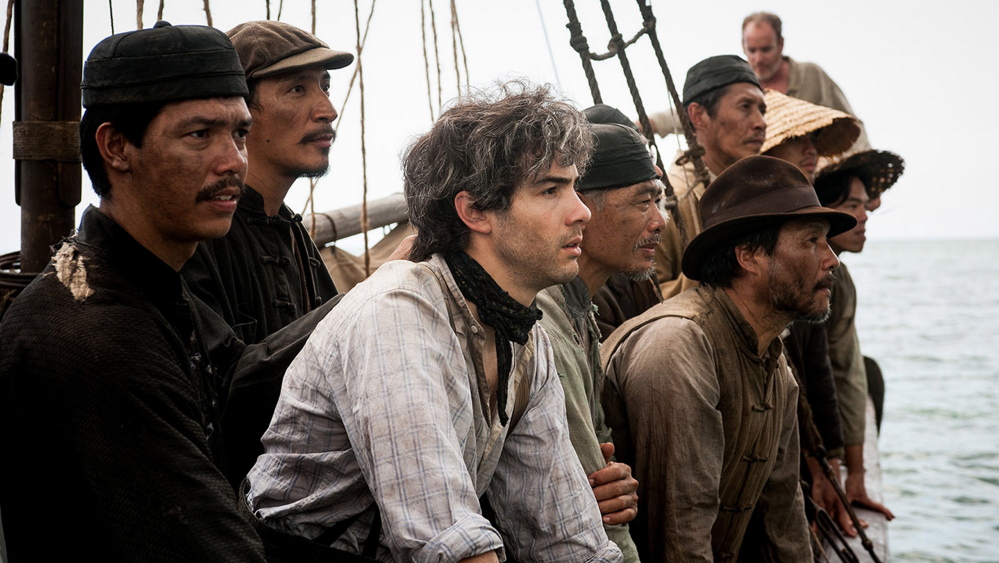“The legacy of the Armenian Genocide is woven into the fabric of America.” — Adam Schiff
Turkish-German Fatih Akin’s “The Cut” gives this year’s Maine International Film Festival its biggest, most powerful and important contribution.
“The Cut” begins in the 1915 Ottoman Empire, as The Great War raged in Europe.
On April 24, 1915, the Ottoman authorities began rounding up, arresting and executing 250 Armenian intellectuals and community leaders.
That was only the beginning of what historians now call the “Great Crime,” or Armenian Holocaust, in which as many as 1.5 million were hunted down and slaughtered by the Muslim Turks as “infidels” in an attempt to homogenize the Turkish state.
But Akin’s stunning film is no dry history lesson. In the style of works like director David Lean’s “Lawrence of Arabia” and John Ford’s “The Grapes of Wrath,” Akin tunnels through the historic smoke and thunder to focus on one man and his family in one small village.
Nazaret “Naza” Manoogian (Tahar Rahim) is a blacksmith who makes small tools and household implements in the tiny village of Mardin in Turkey. He lives a simple life with his wife (Hindi Zahra) and twin daughters, Lucinee and Arsinee (Dina and Zein Fakhoury). But when the winds of war blow into Turkey, the bloodbath begins.
Naza and fellow villagers are put to hard labor.
One day, after months of little food and water, a group of renegade Turks line up the workers and decide to execute them all. To save bullets, they force other workers, thieves and ex-prisoners to cut the throats of all the Armenians. Naza’s appointed slayer, an imprisoned thief, cannot do it. Still, forced to continue, he deliberately botches it, leaving Naza barely alive, but with permanently cut vocal chords. Afterwards, saved by the kindness of Turkish Bedouins and shopkeepers, Naza moves on.
When World War I ends in 1918, the Ottomans are vanquished, and Naza, his home village destroyed, winds up in a refugee camp. It’s here that he is told that his village was torched, his wife was killed and his twin daughters, along with other inhabitants of Mardin, were taken away to distant camps.
This is where the odyssey of Naza begins. Determined to find his daughters, he sets out on a torturous journey that will take him through death camps, burned villages and desolation.
He moves from place to place, person to person, showing a fading photograph of the girls as they were five years past. It seems futile, but it’s clear that nothing, no roadblock, no threat of death, will stop him from reuniting with his daughters.
Naza’s unbelievable journey takes him from ancient Aleppo, Syria, to Lebanon; Havana, Cuba; Florida; Minneapolis and eventually North Dakota. Like the bedraggled tramp Charlie Chaplin in a silent film Naza once saw in the refugee camp, he plods on, ragged and worn, sometimes barefoot. Clues lead him to garment factories, hospitals and Catholic orphanages. Each time a hint emerges, he finds the girls have left. He becomes much like his memory of Chaplin, a hapless tramp chasing two dollar bills being blown by a cold, cruel wind across a world of littered streets. Each time he is close and grabs at them, the wind teases and heartbreakingly blows them away.
Akin’s epic film is a vast canvas of horror, suffering and broken dreams. His locations, all strikingly filmed, were designed by the brilliant Allan Starski (“Schindler’s List” and “The Pianist”).
Cinematographer Rainer Klausmann’s roaming camera takes us to the barren plains of Western America (Canada, actually), the Klan infested swamps of Florida and back streets of Cuba, as Naza persists.
The actors, other than Tahar Rahim, have small parts played expertly and, considering the locations, heroically done.
Rahim as Naza carries the heaviest baggage on this trip, but seems too young for the role. It’s the director’s fault that while others age, Naza seems — but for a few gray hairs — to maintain a youthful appearance. There were other characters who gave stronger performances whom I would have cast in the role. Bartu Kucukcaglayan, who played the thief, comes to mind. His moment with the knife, wanting to save Naza, was heart breaking.
“The Cut” is a monumental piece of film, powerful, haunting and splendidly presented, a real gift to the film festival.
J.P. Devine is a former stage and screen actor.
Copy the Story LinkSend questions/comments to the editors.





Success. Please wait for the page to reload. If the page does not reload within 5 seconds, please refresh the page.
Enter your email and password to access comments.
Hi, to comment on stories you must . This profile is in addition to your subscription and website login.
Already have a commenting profile? .
Invalid username/password.
Please check your email to confirm and complete your registration.
Only subscribers are eligible to post comments. Please subscribe or login first for digital access. Here’s why.
Use the form below to reset your password. When you've submitted your account email, we will send an email with a reset code.